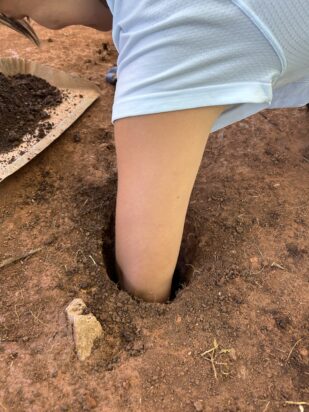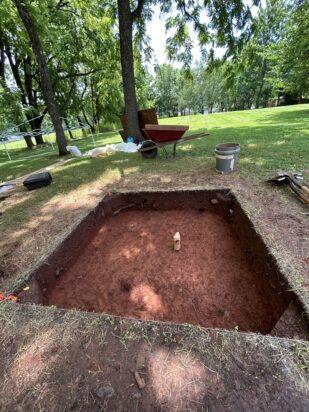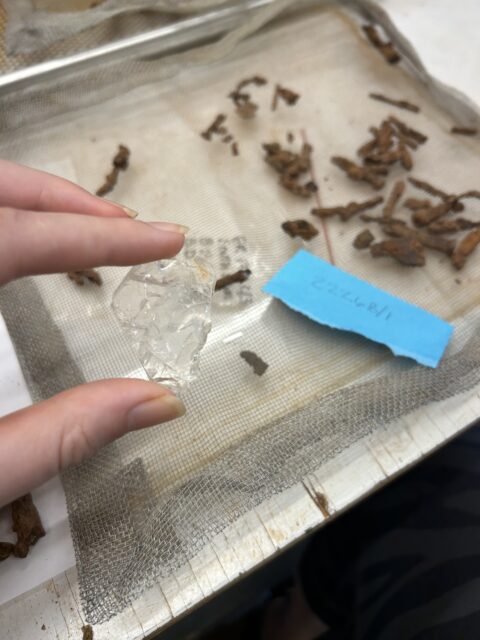Archaeology Blog
2023 Field School Week 4 (Part 1)
By Rose Hill (the happy Texan):
In this week of the field school, we began each morning with a series of lectures by Dr. Proebsting on the topics of landscape archaeology and restoring Poplar Forest to the era of Jefferson’s residency. Our main goal in each of these lectures has been to understand the context of historic landscapes, as well as where Jefferson received and used the influence of neoclassicism for his summer home in Forest, Virginia. We reviewed the circular area on the north front of the home where trees had been planted as part of his design. An example of influence to Jefferson is the movement we went over that William Kent had started. Kent’s idea featured incorporating clumps within landscapes, and we can see this through Jefferson’s decision to use clumps around the front of the home. Archaeologists were shown to have excavated the north front for evidence of clumps to carry out the goal for restoring the area back to what Jefferson had wanted in the layout.
After the lectures each day, we went out to the field and continued the excavations of our units behind the 1857 Slave Dwelling. Luckily, the weather has been sunny enough to keep troweling and screening soil in our units, which was almost impossible last week due to the rain. The soil texture has certainly changed somewhat in regards to moisture, but we have been able to excavate the area and find artifacts. So far, we have found large amounts of nails and metal fragments that date anywhere between the late 19th century and mid–20th century. We have also found a possible post hole in one of the units that is several tenths deep, but its interpretation is still up for debate. Thus, our findings have not changed much since the end of last week. On a positive note, this week has also been a period of learning new techniques for the lab! Part of our time on Monday was spent properly sorting and labeling the artifacts that had been washed. We also spent half of Wednesday’s class learning how to use the flotation machine for screening soil samples. Although the processes for both labeling and flotation have been time-consuming, we are very happy to contribute to the team at the lab.


